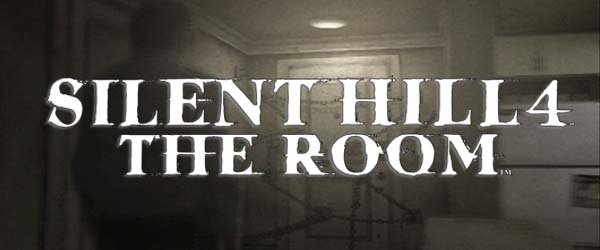
While I was playing through recent horror titles like The Evil Within, I noticed some interesting similarities with Silent Hill 4 that started to give me a new appreciation for some of this game's stronger aspects. In addition, while doing research for my Silent Hill timeline, I had to go back and play through Silent Hill 4: the Room again. I had only played through the game twice before, so I had to replay it in order to figure out how the timeline would work out. And while I was playing the game, I figured that I might as well go ahead and review it. At the time, it seemed like a novel idea to do a retro review of a Silent Hill game that wasn't Silent Hill 2, but lately, I've been seeing a lot of retro-reviews of The Room popping up other places. I haven't done any retro reviews yet; probably the closest thing has been my review of Demon's Souls. But in light of how unsuccessful the later Silent Hill games have been, the unfortunate cancellation of Silent Hills, and the uncertain future of the franchise (and of Konami as a studio), it's a good time to go back to look at what worked and what didn't about the previous games, and explore the question of whether we even want the franchise to continue.
The Room has the reputation of being the "bad" black sheep of the original Silent Hill tetralogy. I always thought that this reputation was unfortunate, and that the game wasn't quite as bad as people made it seem. I actually liked it better than Silent Hill 3 when I first played it, because I had never played the first Silent Hill. After I was able to track down a copy of the first game and play through it, Silent Hill 3 suddenly made a whole lot more sense, and I came to love it almost as much as I loved Silent Hill 2. So while I tend to agree that The Room is the "weakest" of the original Silent Hill games, I never really thought of it as being "bad"; just "less good". The release of future games by third party developers has only made The Room look better in retrospect.
An experimental formula
The game itself is a bit rough around the edges. It deviates significantly from the controls and mechanics established by the previous games in the franchise, and these changes are very hit-or-miss. This might be due, in part, to the possibility that The Room started out as an independent side project that was developed concurrently with Silent Hill 3, and that was eventually redesigned to work as a Silent Hill game in order to be more commercially viable. Whether or not that's true is still a hot issue of debate among the fanbase, but it's obvious to everybody that The Room plays a lot differently from previous titles.
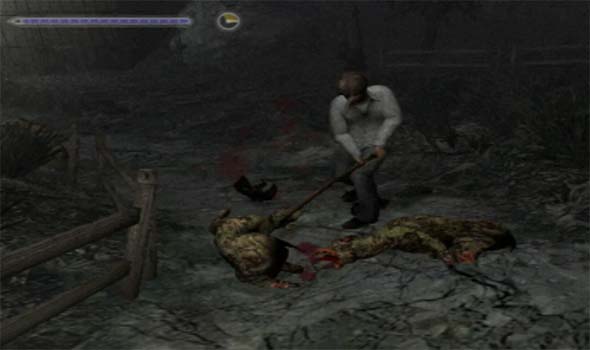
Movement and combat controls are radically changed from previous games in the series.
The most immediately obvious deviation is in movement and camera controls. The semi-first-person "tank" controls have been completely abandoned in favor of direct directional inputs, and the camera is significantly more limited than it has been in previous games. You can't snap the camera behind the character by holding the "look" button as you could do in previous games. Almost all camera angles are pre-set angles, and the player can usually only toggle between two possible camera angles in any given area.
This results in some very clumsy navigation of the environment, and it's very easy for the character to get turned around when camera angles flip. Most of the time, a camera change will go without a hitch, but there are a few frames in the game that consistently result in erratic and unpredictable movement. It happens most often when a camera change occurs concurrently with a change in direction of the character (to navigate around a corner or an obstacle). If the player's timing for changing the character's movement direction is not perfectly-timed, then the character ends up turning around, which can result in getting stuck in a loop between the two camera angles. This is the very reason that I prefer the tank controls. They may be a bit cumbersome, but at least they're consistent and always relative to a single frame of reference (the character's position in the world), rather than to an unpredictable camera.
The second major change is to combat. The game was designed to have a greater emphasis on melee combat, complete with new target-locking controls, a variety of breakable melee weapons, very limited ammunition for guns, and an on-screen meter for charging power attacks. The new movement controls do make it a bit easier to maneuver around enemies (especially multiple enemies), but only if you're in an open space and the camera angle doesn't go all wonky on you. The mechanics are serviceable, and I don't think they're as bad as some critics insist.
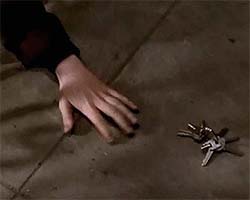
The designers were probably trying to mimic
the horror trope of fumbling for keys.
Inventory management is where things really start to get bad. Henry isn't a walking closet like the previous games' protagonists, and he has only a limited number of inventory slots. This is probably partly the result of the inventory being accessed in real-time by the directional buttons (which also might have played a role in the changes to the movement control scheme being entirely based up on the analog stick), in a desire to create a sense of frantically searching your pockets for a weapon or item while under pressure. It also adds more relevance to the Room 302 hub (another dramatic departure from previous games) by forcing you to go back to restock on supplies or swap out puzzle items.
But it's hindered by a lot of little mistakes. Identical items do not stack. Every individual health drink, med kit, and box of bullets takes up its own entire inventory slot. Bringing a melee weapon, a firearm, a single box of spare ammo, and a healing item or two easily takes up half your inventory. That's fine, until you start collecting more ammo and healing items in the world, and you quickly run out of space. And the game doesn't give you any way to drop an item from your inventory. So if you find a desperately-needed med kit, but your inventory is full of useless golf clubs and puzzle items, you have to travel all the way back to the last portal to the safe room, or risk pushing on ahead and hoping nothing kills you. This can result in a lot of backtracking to Room 302 and really slows down the pace of the game. The fact that many melee weapons can break means that I also never bother to use those weapons. The default steel pipe that you get early in the game never breaks, rendering the numerous golf clubs, wine bottles, and other such breakable weapons moot. I would recommend not even picking them up. And once I get the hand axe (which also never breaks), then the pipe gets retired into my item box also.
Other mechanical changes, such as the first-person segments in Room 302, the lack of a flashlight or radio, and so on fall more into the category of "different" for me, without necessarily being better or worse. The lack of a flashlight does mean that darkness doesn't play a role in the game at all, and your view of the environment is rarely restricted. So this game doesn't have the "what the heck is that?" factor that the previous games (particularly 1 and 3) nailed so well. The removal of the radio also makes sense (to me) as having emerged from the real-time inventory and focus on melee combat. Warning the player about incoming enemies (the radio's primary function in past games) would only lessen the "fumbling for your keys (or weapon)" sense that the inventory system was trying to evoke.
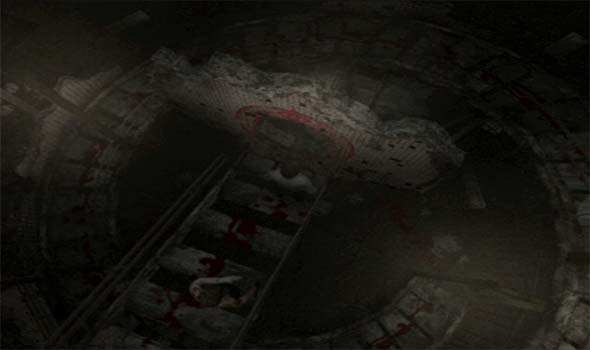
Henry must dive into the nightmare of a serial killer.
While I wouldn't want a Silent Hill game to be played entirely in first person, I do think that the first person perspective in Room 302 actually does add something to the game. It creates an extra degree of immersion in the setting, and emphasizes how surreal the room itself is. Waking up and walking down the hallway is such a normal, mundane task, and depicting that from first person emphasizes this. And then being able to explore the odd nooks and crannies of the room in first person helps to accentuate the uncanniness of the situation. Combine this with the growing sense of uncertainty and unease about the room itself, and Room 302 probably becomes the scariest part of the game.
The mundane, the uncanny, and the surreal
In the beginning, the room is a safe haven. It's a place you go to restock ammo, heal yourself, save your game, and get away from the monsters and puzzles of Walter's nightmare. But as the game goes on, that sense of safety is slowly eroded until eventually, returning to that room is a necessary evil rather than a comfort. In my review of The Evil Within, I mentioned how that game's hub level starts out feeling creepy, but gradually gets safer and less scary as the game progresses. Room 302 blows that hub out of the water! And at the time that it released, this was a clever subversion of the safe room trope that had been established by Resident Evil. The controls are awkward and clumsy, and the backtracking gets repetitive, but Room 302's slow loss of safety and security works on a deep thematic level.
There are some other really deep themes in this game that really show the strength of interactive storytelling that Team Silent is able to accomplish. Whereas Silent Hill and Silent Hill 3 were more dependent on visually showing disturbing imagery in cutscenes or environmental cues, both SH2 and SH4 convey their disturbing themes through gameplay. In this sense, The Room may even surpass Silent Hill 2.
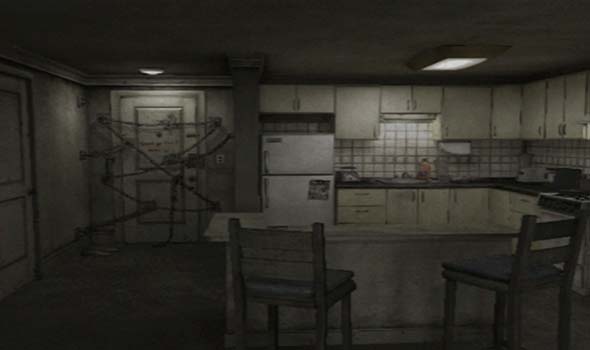
Henry's physical isolation from the rest of the world mirrors his emotional isolation.
Isolation is a strong theme in all the Silent Hill games, but SH2 and SH4 are the most successful at presenting that theme and allowing it to contribute to the horror of the game. Both games create physical and emotional disconnects between the player character and the others that he meets, and even between the character and player who is controlling him. Whereas the protagonists of the first and third games have human companions to lift the sense of isolation and provide support (Cybil, Lisa, Douglas, and even Vincent), the second and fourth games isolate and distance the protagonists from the other characters, providing the protagonists with no support to lean on.
Silent Hill 2 does this via the lonely, desolate environments, through James' subtly off-putting interactions with other characters, and through his nature as a sort of "unreliable narrator". Silent Hill 4 goes even further by actually starting the game with an independent narrator to put a wall between the player and Henry! Henry has a physical barrier put up between himself and the outside world. He is locked within his room, unable to even reach out for help. He can only interact with other characters through a dream state -- characters in this game are drawn into the nightmare, rather than projecting it outward onto reality, which is an interesting inversion of the previous games' Otherworlds. Even in the dreams, Henry's own social issues (he might be mildly autistic) prevent him connecting with any of those characters, leaving him powerless to rescue them from their looming deaths. Eventually, he develops a bond with Eileen, who becomes a helpful companion. But that doesn't happen until more than halfway through the game, and Eileen's handicaps continue to physically isolate Henry, since she can't follow him through certain obstacles.
James (SH2) is an unreliable narrator [LEFT], creating distance between the character and player.
The Room starts with an external narrator [RIGHT], further separating Henry from the player.
And while Henry may have semi-willingly isolated himself from the rest of the world by moving away from home to start a new life as a social shut-in, Walter is isolated due to a severe abandonment complex. Abandonment also becomes a recurring theme in the game through the inclusion of an orphanage, a secret prison, and Walter's backstory. But even Henry may have a bit of abandonment in his story too. Despite being shut off from the outside world, nobody comes asking for him or looking for him, and even his neighbors and the super of the building barely take notice. Was Henry also abused or neglected as a child? Is he also an orphan?
But perhaps the most successfully disturbing theme in the game is the one that is unique within the series: voyeurism. While locked in your room and isolated from the outside world, Henry is able to peer out his windows to watch his neighbors, look through the peephole in his door, or observe Eileen through a hole in the wall between his apartment and hers. I would imagine that every person who plays this game stops to stare out the window, through the peep hole, and into Eileen's bedroom almost every time they visit room 302 (at least in the first half of the game). The game makes a big deal of presenting story to you by forcing you to use these viewports early in the game, and by half-way through the game, the game has also taught you that it can be a way of finding puzzle solutions and key items. This creates a compulsion to keep checking these viewports regularly for new information or clues, even though they also throw the occasional scare at you as well. In most circumstances, these acts would paint Henry as a peeping Tom or stalker worthy of an eviction and restraining order, but to the player they are made to seem necessary. And it's all stuff that the player actively does, not just something that you see Henry do during cutscenes. The game systematically compels the player to want to engage in this Hithcock-ian voyerism!
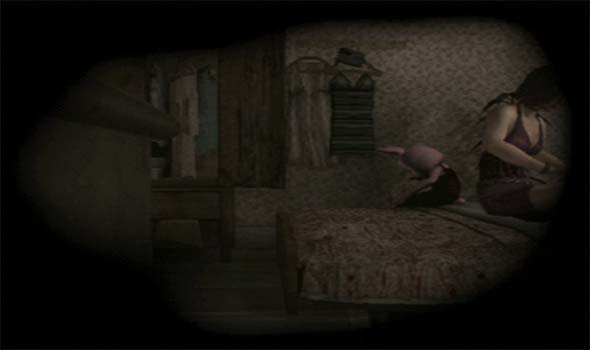
Peeping on your neighbors is a game system that reveals chunks of story and even a puzzle solution or two.
Even the monsters will often pause to watch the player for a moment before attacking. It's an eerie effect (especially from the Twin Victim enemy that points at you before moving to attack), and it's another example of how these themes are woven into the gameplay itself. The monsters themselves are easily the weakest designs in Team Silent's repertoire, with the two-headed apes and nurses looking (and sounding) outright silly, and the wall creatures being absolutely obnoxious.
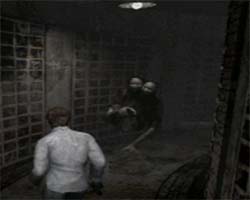
We're watching you...
While James, Heather, and Harry get a lot of credit for being relatable "everyman" characters, Henry is a little different. I get the feeling that the audience isn't necessarily supposed to identify with Henry. He seems to be a very deliberately Brechtian character. He's depicted as a "weird guy", the kind of person who probably had few (if any) friends in school and was picked on and teased by other kids. His neighbors talk about him being an awkward shut-in who makes them uncomfortable. Despite his isolation from society (and possible mistreatment and abandonment), he still tries to help people (people he doesn't even know!). He's a person that society has discarded and whom the world ignores, but yet he (depending on the ending) saves it. And it is only through his specific, supposedly undesirable traits, that Henry is able to observe the situation, piece together the puzzle, and disrupt Walter's ritual. Henry's handicaps may appear subtle and non-crippling (and many players probably don't even recognize them), but he is a symbol that everyone, despite any perceivable "weirdness", and despite being relegated to the fringes of society, are human beings whose life is valuable, who have unique contributions to make, and who deserve to be treated with respect.
A puzzling plot
I also thought that the narrative itself was pretty interesting. The game underplays its actual puzzles (most of which don't even appear until the second half of the game), but in a sense, it presents the narrative itself as a large puzzle for the player to solve. And trying to solve that puzzle is one of the things that really kept me playing this game (I certainly didn't keep playing for the compelling combat and inventory management).
In fact, parts of this game can probably even be seen as a precursor to the "walking simulators" that have become a popular genre for narrative-based and horror games like Amnesia. Much of the game consists of walking back and forth around your apartment, exploring and re-exploring every nook and cranny to pick out the little details that have changed, and then gathering clues from them. This is an approach that Hideo Kojima and Guillermo del Toro would expand to great success in their P.T. demo for Silent Hills.
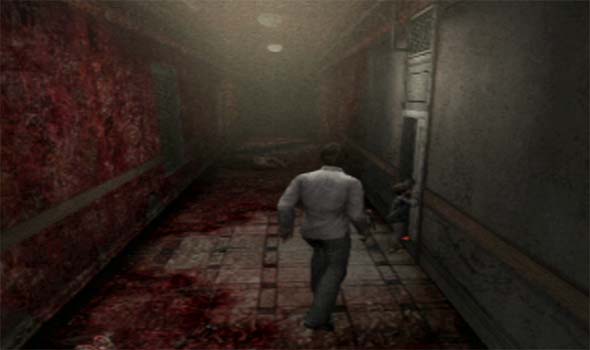
Unraveling the surreal mystery of Room 302 was compelling enough to keep me
playing through the repetitive second half of the game.
And it's fortunate that the story is weird enough to be interesting, because the second half of the game can be a real drag. The entire second half of the game is framed as an escort mission in which Henry must guide Eileen as he backtracks through all the same small levels that he's already explored. The player gets to explore a few extra nooks and crannies of these areas, but for the most part, they are identical to your first visit. The only difference is that you'll finally get the puzzle items to solve some of the puzzles that you couldn't solve in your first visit - which is something that will probably confound first-time players who will leave levels thinking that they must've missed something important.
Protecting Eileen can be a problem, since she's crippled and slow. She can be equipped with a weapon, but that's almost a liability, as she'll sometimes decide to ignore your efforts to run past enemies and will stand her ground and attack them. In these cases, you can't leave her behind, so you either have to wait for her to finish, or you have to help her kill the enemies and risk taking damage to yourself. Fortunately, Eileen can't die, but this is also a liability. Instead of getting a game over for allowing Eileen to take damage, it will just make the final boss fight harder (bordering on impossible), and it will negatively affect the ending of the game. It won't be a shock though, since you'll see Eileen progressively getting more and more injured and "possessed". In a clever twist, allowing Eileen to get damaged (and thereby likely getting a worse ending) will actually reward the player by allowed the injured and possessed Eileen to explain additional elements of the game's backstory. So getting the "bad" ending doesn't feel like as much of an implicit fail state as the bad ending of Silent Hill 1, and it feels more like a consequence of your actions (similar to the ambiguous endings of Silent Hill 2).
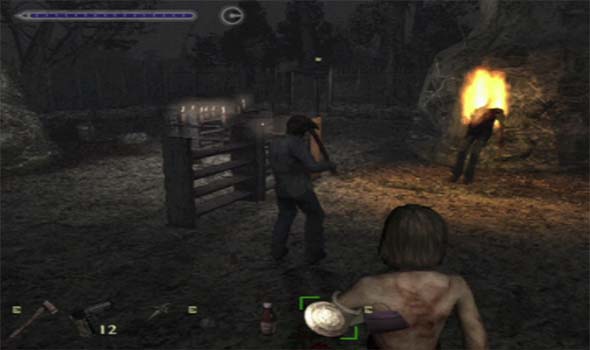
Guiding Eileen through a ghost-filled retread of each level makes up the entire second half of the game.
And then there's the ghosts. Like the rest of the monsters in the game, the ghosts are more annoying than they are scary. They act as psuedo-bosses in a game that only has two actual proper bosses, but the ghosts aren't that difficult. They are, however, invincible, and cannot be killed. You have to pin them to the ground with one of several magic swords. Or just run past them. Whichever.
A flawed, creative experiment
Silent Hill 4: the Room dared to be different from its predecessors. It relied on different influences and sources for inspiration than the previous games, and it showed that the other members of Team Silent still had plenty of fresh ideas and concepts that they could work with to explore this game universe. It was a creative experiment that was a far cry from the derivative, tedious obsession that third party developers of future Silent Hill games would show for recreating the story of Silent Hill 2. And this highlights a central problem with outsourcing creation of new content to people who consider themselves "fans" of the source material: They desperately want to re-create the thing that made them a fan to begin with, often to the point of rote repetition, and often without a conscious understanding of the elements of design and writing that went into the original.
The Room isn't particularly scary, and it has a lot of mechanical rough edges. But it's story went places new and creative, and it is creepy and unnerving, in a way that is at least comparable - if not quite equal - to Silent Hill 2.